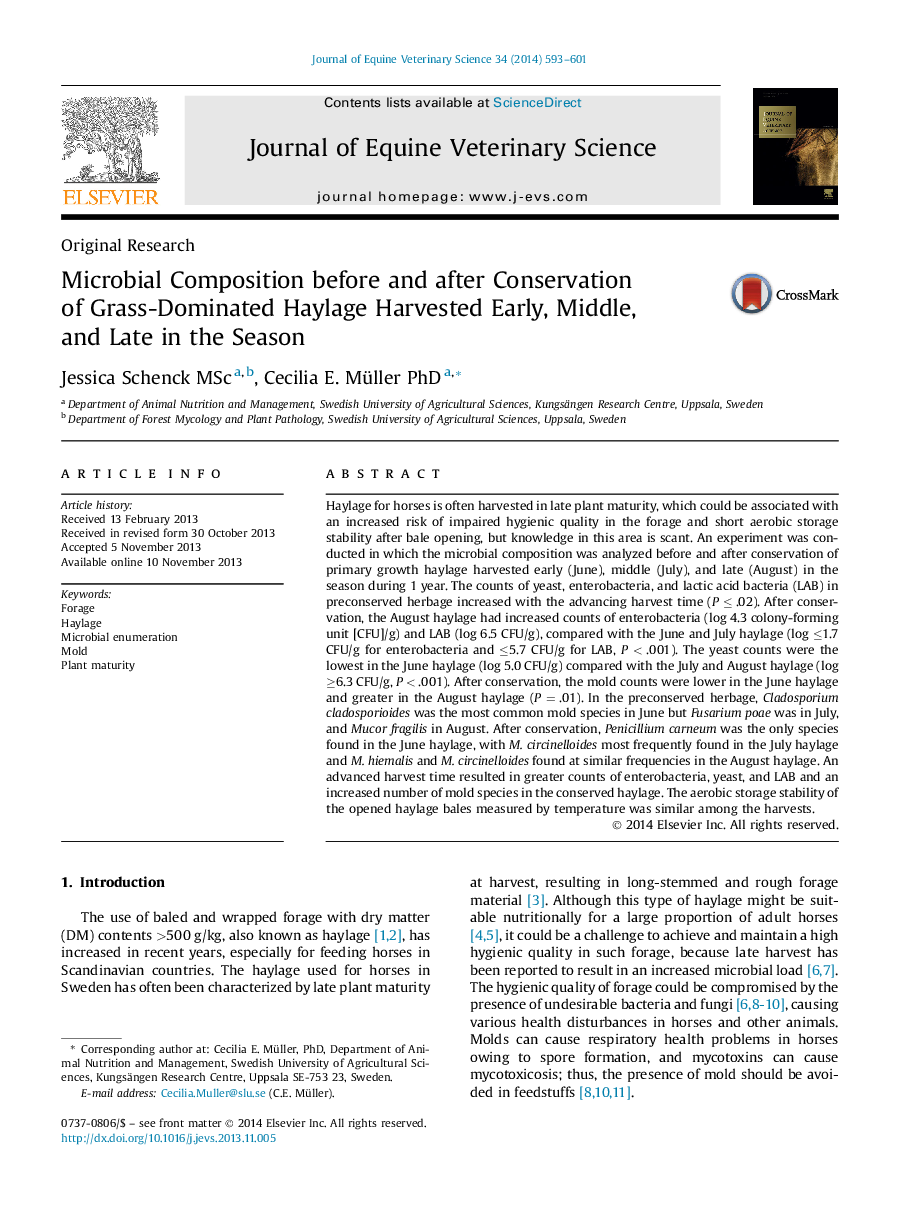| کد مقاله | کد نشریه | سال انتشار | مقاله انگلیسی | نسخه تمام متن |
|---|---|---|---|---|
| 2394780 | 1101532 | 2014 | 9 صفحه PDF | دانلود رایگان |
Haylage for horses is often harvested in late plant maturity, which could be associated with an increased risk of impaired hygienic quality in the forage and short aerobic storage stability after bale opening, but knowledge in this area is scant. An experiment was conducted in which the microbial composition was analyzed before and after conservation of primary growth haylage harvested early (June), middle (July), and late (August) in the season during 1 year. The counts of yeast, enterobacteria, and lactic acid bacteria (LAB) in preconserved herbage increased with the advancing harvest time (P ≤ .02). After conservation, the August haylage had increased counts of enterobacteria (log 4.3 colony-forming unit [CFU]/g) and LAB (log 6.5 CFU/g), compared with the June and July haylage (log ≤1.7 CFU/g for enterobacteria and ≤5.7 CFU/g for LAB, P < .001). The yeast counts were the lowest in the June haylage (log 5.0 CFU/g) compared with the July and August haylage (log ≥6.3 CFU/g, P < .001). After conservation, the mold counts were lower in the June haylage and greater in the August haylage (P = .01). In the preconserved herbage, Cladosporium cladosporioides was the most common mold species in June but Fusarium poae was in July, and Mucor fragilis in August. After conservation, Penicillium carneum was the only species found in the June haylage, with M. circinelloides most frequently found in the July haylage and M. hiemalis and M. circinelloides found at similar frequencies in the August haylage. An advanced harvest time resulted in greater counts of enterobacteria, yeast, and LAB and an increased number of mold species in the conserved haylage. The aerobic storage stability of the opened haylage bales measured by temperature was similar among the harvests.
Journal: Journal of Equine Veterinary Science - Volume 34, Issue 5, May 2014, Pages 593–601
